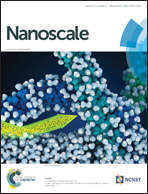The relevance of membrane models to understand nanoparticles–cell membrane interactions
Abstract
Over the past two decades, numerous types of nanoparticles (NPs) have been developed for medical applications; however only a few nanomedicines are actually available on the market. One reason is the lack of understanding and data concerning the NP fate and their behavior upon contact with biological media and cell membranes. Biomimetic membrane models are interesting tools to approach and understand NPs–cell membrane interactions. The use of these models permits one to control physical and chemical parameters and to rapidly compare membrane types and the influence of different media conditions. The interactions between NPs and cell membranes can be qualified and quantified using analytical and modeling methods. In this review, the major studies concerning NPs–cell membrane models and associated methods are described. The advantages and drawbacks for each method are compared for the different models. The key mechanisms of interactions between NPs and cell membranes are revealed using cell membrane models and are interrogated in comparison with the NP behavior in cellulo or in vivo. Investigating the interactions between NPs and cell membrane models is now proposed as an intermediate step between physicochemical characterization of NPs and biological assays.


 Please wait while we load your content...
Please wait while we load your content...